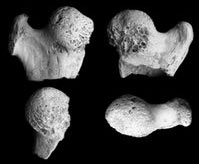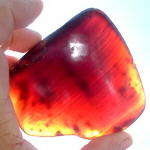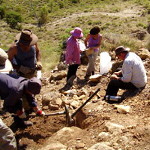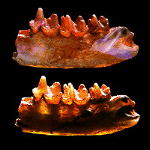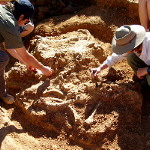|
Tiny bones rewrite textbooks18 January 2007 Small but remarkable fossils found in New Zealand will prompt a major rewrite of prehistory textbooks, showing for the first time that the so-called "land of birds" was once home to mammals as well. The tiny fossilised bones - part of a jaw and hip - belonged to a unique, mouse-sized land animal unlike any other mammal known and were unearthed from the rich St Bathans fossil bed, in the Otago region of South Island. But the real shock to scientists was that it was there at all: until now, decades of searching had shown no hint that the furry, warm-blooded animals that thrived and prospered so widely in other lands had ever trodden on New Zealand soil. The fact that even one land mammal had lived there, at least 16 million years ago, has put paid to the theory that New Zealand's rich bird fauna had evolved there because they had no competition from land mammals. An international team led by Trevor Worthy, of the University of Adelaide, Alan Tennyson, of the Museum of New Zealand Te Papa Tongarewa, and Mike Archer, of the University of New South Wales, note that New Zealand separated from the ancient supercontinent of Gondwana more than 80 million years ago. The research has been published in the journal Proceedings of the National Academy of Sciences. Amazing find hints at more "It also suggests that New Zealand was not completely submerged, as some scientists thought, when sea levels were high about 25 to 30 million years ago." The team believes that more mammal specimens may emerge, perhaps even other species that predate the split between pouched marsupials and live-bearing placental mammals. The St Bathans fossil field - which has also produced many other species of animals, including fish and birds - also promises to shed new light on climate change in the Australasian region, recording a massive shift from a warm, wet phase to a much cooler and drier period. "This promises to be a richly rewarding fossil field and the heraldic discovery of New Zealand's first non-flying mammal represents just the first page of a fascinating new chapter in the history of the world's mammals," says Professor Archer. |
Latest news
|


